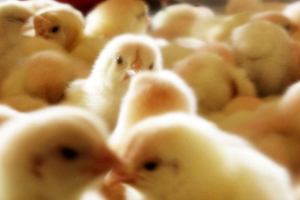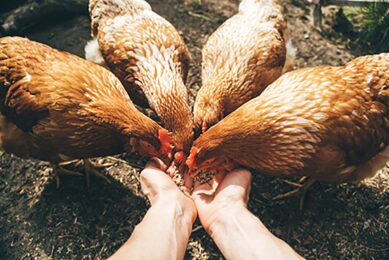Poultry probiotic’s coat clues to ability to battle bugs

Researchers at the BBSRC strategically-funded Institute of Food Research have characterised the coat of a potential poultry probiotic, giving the first clues of how it may be used to exclude pathogenic bacteria from chickens.
Lactobacillus johnsonii has previously been shown to exclude Clostridium perfringens from the guts of poultry, opening the door to it being developed as a way of reducing necrotic enteritis in poultry and food poisoning in humans. Recently, researchers at IFR, found that the bacteria make coats for themselves that play important roles in colonisation in this strain.
Now, in research published in The Journal of Biological Chemistry, the researchers present the first characterisation of what makes up this coat. This will give us a better idea of the role of the coat and help in the development of these bacteria as a way of combatting C. perfringens.
Using NMR spectroscopy, the researchers discovered that the coat is made up of two types of exopolysaccharides (EPS), which are long sugar-containing molecules that many bacteria use to encapsulate themselves. This capsule may help the bacteria to cope with environmental stress, or aid colonisation and adhesion. Different bacterial strains have different EPS structures, and understanding this is important as they represent a key way bacteria interact with the world around them.
‘Characterising the EPS structures in the L. johnsonii strain is the first step to explaining how it might outcompete C. perfringens.’ said Dr Arjan Narbad, lead author of the paper.
Previous studies had identified potential genes in L. johnsonii for producing EPS, giving the researchers tools to probe how the bacteria synthesise these molecules. Knocking out the whole cluster of EPS genes meant the bacteria produced no capsule. Further analysis of the genes by IFR PhD student Enes Dertli uncovered their potential roles in the capsule biosynthesis process but more research is needed to fully understand the system, and also how it is regulated.
The structures of these two EPS molecules appear to be unique to this strain. Structural features, such as the phosphorylation patterns, are likely to be a major influence on how well bacteria adhere. Other structural modifications such as acetylation are thought to help protect the EPS from the enzymes produced by gut bacteria.
This strain of Lactobacillus johnsonii is now being taken through farm-scale trials to assess its potential use to combat pathogenic infections of poultry by bacteria such as C. perfringens. This study provides insights into exactly how this works, and future work will focus on unpicking how the EPS molecules in the coat contribute to colonisation and pathogen exclusion.













